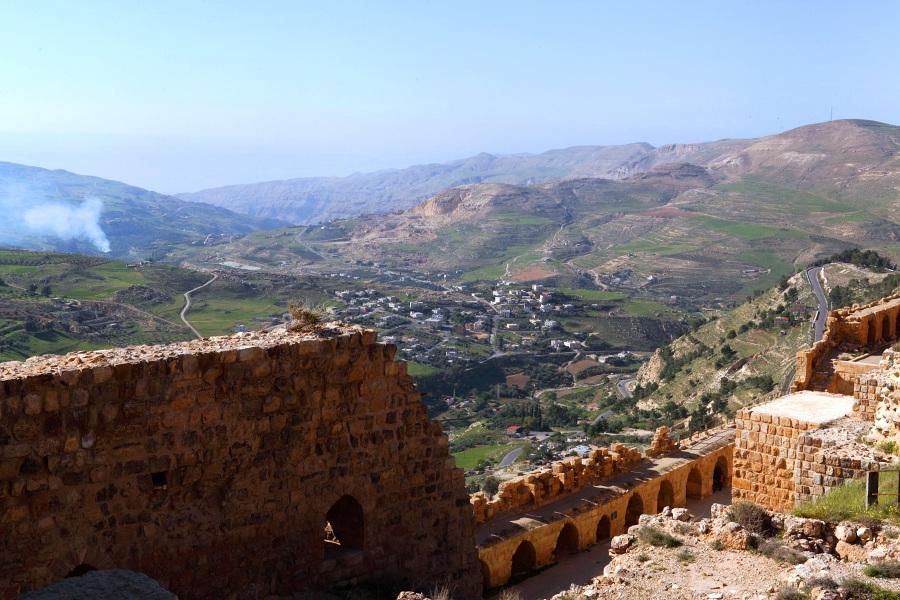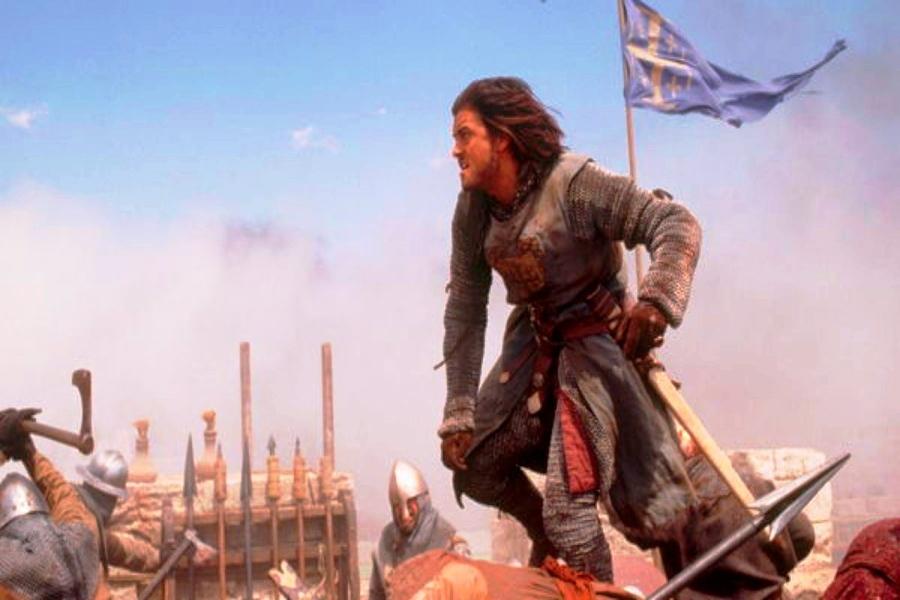+962 7 9635 8199
[email protected]
The magnificent Crusader fortress of Kerak – Crak des Moabites, or Le Pierre du Desert to Crusaders – soars above its valleys and hills like a great ship riding waves of rock. But Kerak’s origins go back long before the Crusaders; the earliest remains are Iron Age, shortly after the Exodus, when this was a part of Moab. It was known as Kir-haraseth, Kir-heres, or Kir, and its doom was prophesied by Isaiah (16:7), who mentions its ‘raisin-cakes’, presumably a local specialty. Then it falls out of history until the Byzantine period, when it was important enough to have an archbishop.
It was the Crusaders who made Al Karak (biblical Charach Mouba) famous. The fortress, located 124 km south of Amman, was built in 1152 by Payen le Bouteiller, lord of Montreal and of the province of Oultre Jourdain, on the remains of earlier citadels, which date back to Nabataean times.
He made Al Karak the new capital of the province, for it was superbly situated on the King’s Highway, where it could control all traffic from north and south and grow rich by the imposition of road-tolls.
There were -as there are today- two parts of Al Karak, both contained within stout walls, but the citadel and its fortress are separated from the town by a deep dry moat.
The fortress is typically Crusader, with dimly lit stone-vaulted rooms and corridors leading into each other through heavy arches and doorways. The best preserved are underground, and to be reached through a massive door.

In Al Karak (Kerak) the castle in itself is more imposing than beautiful, though it is all the more impressive as an example of the Crusaders’ architectural military genius. Each stronghold was built to be a day’s journey from its neighbor. At night, a beacon was lit at each castle to signal to Jerusalem that it was safe.
All the inhabitants of the town of AL Karak could gather for protection within the citadel in times of danger – as they did in 1173 when the Zengid ruler Nureddin attacked the castle. His siege was unsuccessful, as were later attempts by Saladin in 1183 (when the marriage of the heir of Kerak was taking place inside, and Saladin chivalrously kept his siege-engines off the bridal tower), and again in 1184. It was not until the end of 1188, after a siege of more than a year, that Kerak finally surrendered to the Muslims.
Whether you approach Al Karak from the ancient Kings Highway to the east or from the Dead Sea to the west, the striking silhouette of this fortified town and castle will instantly make you understand why the fates of kings and nations were decided here for millennia.
The al karak city today is home to around 170,000 people and continues to boast a number of restored 19th-century Ottoman buildings, restaurants, places to stay, and the like.
Al-Karak lies 140 kilometres to the south of Amman on the ancient King’s Highway along the Wadi Al-Karak, 15 miles (24 km) east of the Dead Sea. Built on a small, steep-walled butte about 3,100 feet (950 metres) above sea level, the town is the Qir-hareseth, or Qir-heres, of the Bible and was one of the capitals of ancient Moab. Its ancient name means “Wall of Potsherds” in Hebrew or “City of Potsherds” in ancient Moabite.
The Al karak castle of which has buildings around it from the 19th-century Ottoman period, is one of the three largest castles in the region, the other two being in Syria. Al-Karak is the capital city of the Al Karak Governorate.
In the mid-9th century BCE, Mesha, king of Moab, was attacked by the combined forces of Israel, Judah, and Edom for his failure to pay tribute.
The siege of the ancient Moabite stronghold of Qir-hareseth and the forces’ subsequent withdrawal after Mesha offered his heir as a burnt offering on the city wall is vividly described in the Bible (2 Kings 3). Isaiah and Jeremiah, in their prophecies of doom for Moab, also mention the city (Isaiah 15, 16; Jeremiah 48).


In the 7th century BCE the Moabite cities were destroyed by the Assyrian king Ashurbanipal, and later they were gradually repopulated by desert peoples, likely the Nabataeans. The natural fortress has evidence of settlement throughout postbiblical times; in the 2nd century CE it was known to the geographer Ptolemy as Characmoba. Subsequently settled by the Byzantines, who had a bishopric there, it is represented as a walled city on the Madabā mosaic map, thought to be the oldest surviving map of Palestine and the neighbouring territories (6th century CE).
Al-Karak is absent from the chronicles of the Arab conquest of Palestine, and at the time of the First Crusade (launched in 1095) it was almost abandoned. Le Krak du Désert,al karak a heavily fortified Crusader citadel, was built on the site of the ancient fortress in 1132; it fell to the Muslims in 1188, the year after the Crusaders’ defeat at the Battle of Ḥaṭṭīn (in Galilee), in which they lost control of Palestine to Saladin. The town’s present name is first mentioned in Islamic chronicles of the 13th century.
In 1840 Al-Karak was occupied by Ibrahim Basha; it was administered by the Ottomans in the 1890s and by the British following World War I. In 1920, before the arrival of Abdullah and the advent of the emirate of Transjordan, the town of Al-Karak announced its independence, which was short-lived.
Following the San Remo conference, 1920, Great Britain was given a mandate to govern the area. The newly appointed High Commissioner in Jerusalem, Herbert Samuel, sent several officials east of the River Jordan to create a local administration. Major Alec Kirkbride was based in Al-Karak with a small detachment of policemen. He established what he named The National Government of Moab with himself as president. In January 1921 Emir Abdullah Hussein began assembling an army in Ma’an and announced his intention to attack the French in Syria. After a brief consultation with his superiors Kirkbride’s government welcomed the arrival of the Emir. At the Cairo conference, March 1921, Abdullah was recognized by the British as ruler of Emirate of Transjordan.
In the 1920s, Al-Karak had a population of 8,000 and had the third largest urban population (after Amman and Salt with 20,000 each) in Transjordan.
Al-Karak later became a market center for the sparsely settled surrounding countryside. The town of alkarak has the remains of several Byzantine churches, and the castle of alkarak located at Al-Karak is an excellent example of medieval military architecture. The main part of the building dates to the Crusader period, with added annexes later constructed by the Mamluks and the Ottomans.